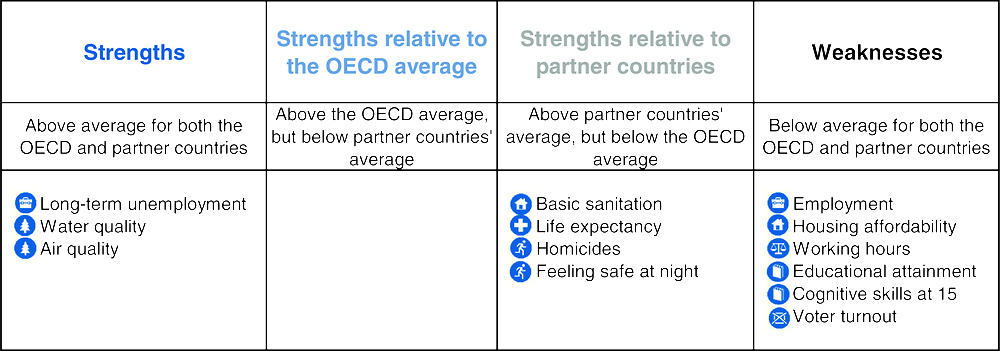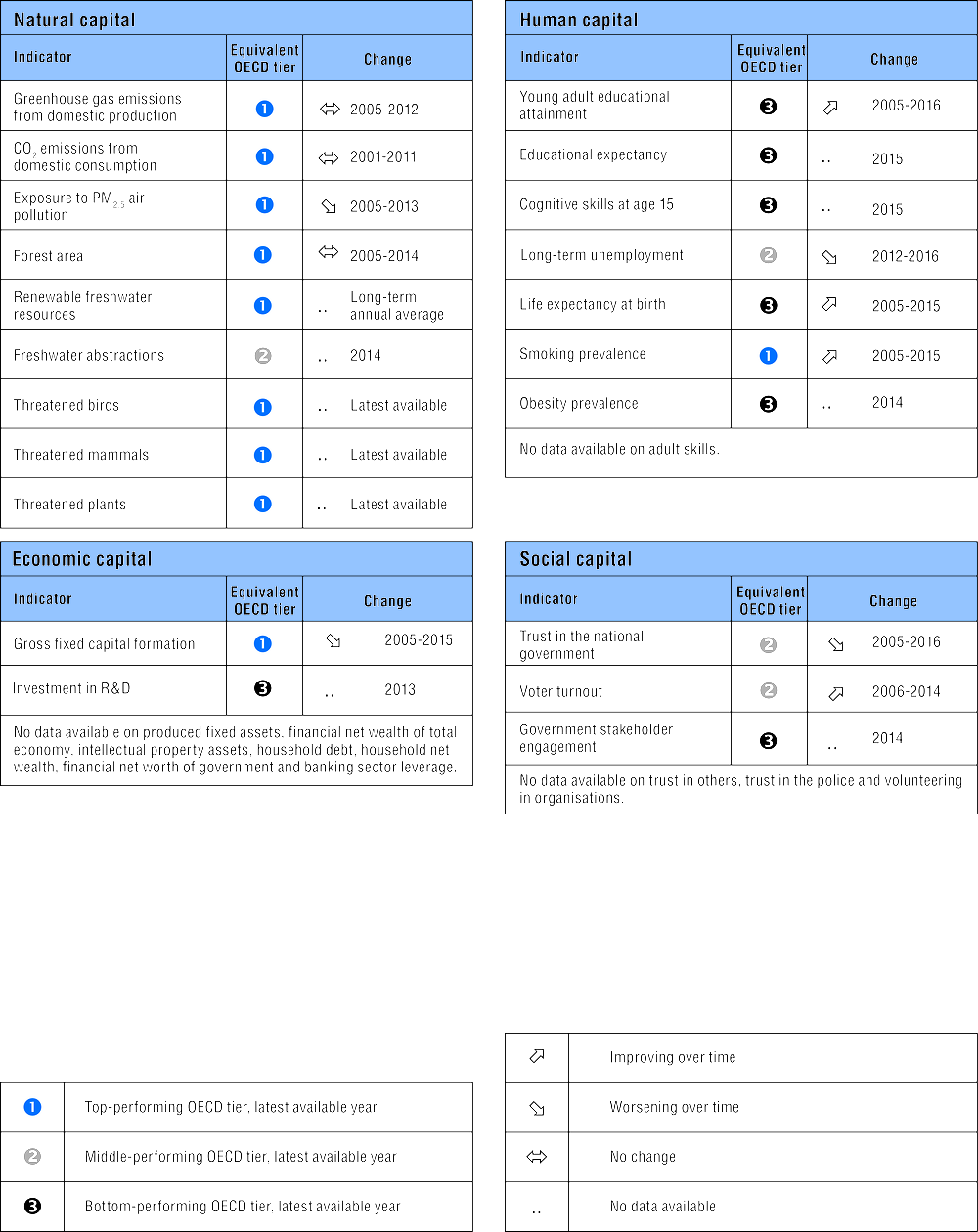How's life in Costa Rica?
Figure 5.38 shows Costa Rica’s relative strengths and weaknesses in well-being with reference to both the OECD average and the average of the OECD partner countries considered in How’s Life? 2017 (i.e. Brazil, Colombia, Costa Rica, Lithuania, the Russian Federation and South Africa).
Costa Rica has several areas of strength relative to both the OECD and partner countries: At 1.6% in 2016, the long-term unemployment rate stood below both the OECD average (2%) and the average for the partner countries (4.5%). About 85% of Costa Ricans are satisfied with their local water quality, above the OECD average (79%), and well above that of the partner countries (66%). Air quality (air pollution by fine particulate matter, PM2.5) is also better than the average in both the OECD and partner countries.
With around 89% of the population reporting that they have friends or relatives whom they can count on in case of need, social support in Costa Rica is in line with the average in both the OECD (89%) and partner countries (90%).
There are also several outcomes where Costa Rica is above the average for the partner countries, but below the OECD average: Life expectancy at birth is 79.6 years, almost in line with the OECD average, but well above that of partner countries (71). A low share of Costa Ricans live in housing without basic sanitation (2.2%). The homicide rate is almost twice as high as the OECD average, but remains one of the lowest across the partner countries. 44% of Costa Ricans feel safe walking alone at night in the area where they live, very slightly higher than the 43% partner country average, but below the OECD average of almost 69%.
Costa Rica also has some areas of weakness compared to both the OECD and other partner countries: In 2016, the employment rate was 58.7%, below both the OECD average (67%) and the average among the partner countries (63.9%), and almost 28% of employees worked very long hours, among the highest in both the OECD and partner countries. Adults’ upper secondary educational attainment (40%) and students’ cognitive skills at age 15 are among the lowest in both the OECD and partner countries. Voter turnout (around 68% in 2014) falls marginally below the OECD average of 69% and the average among the partner countries (70%). Housing affordability is also worse than both the OECD average and the average for partner countries.


